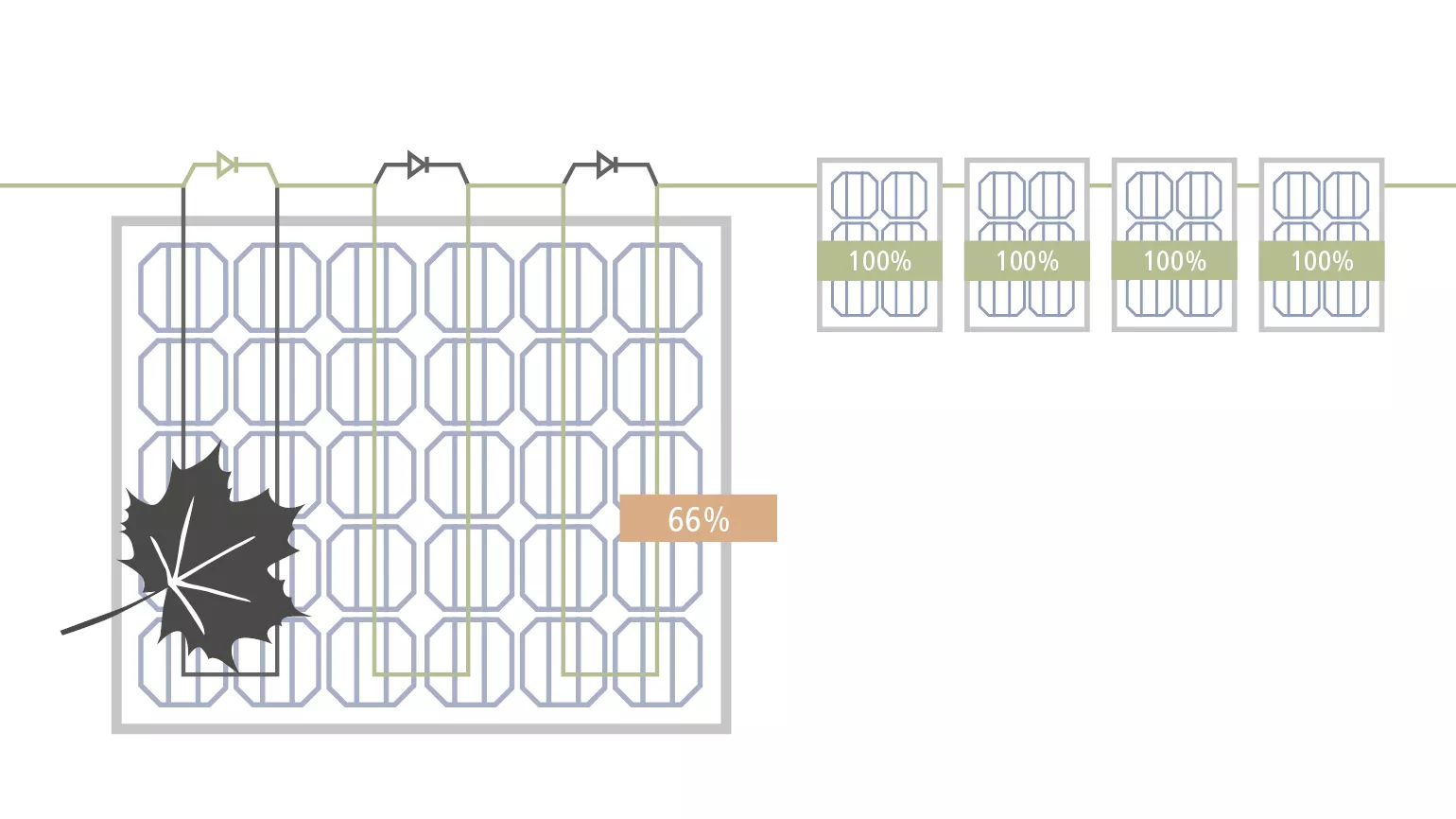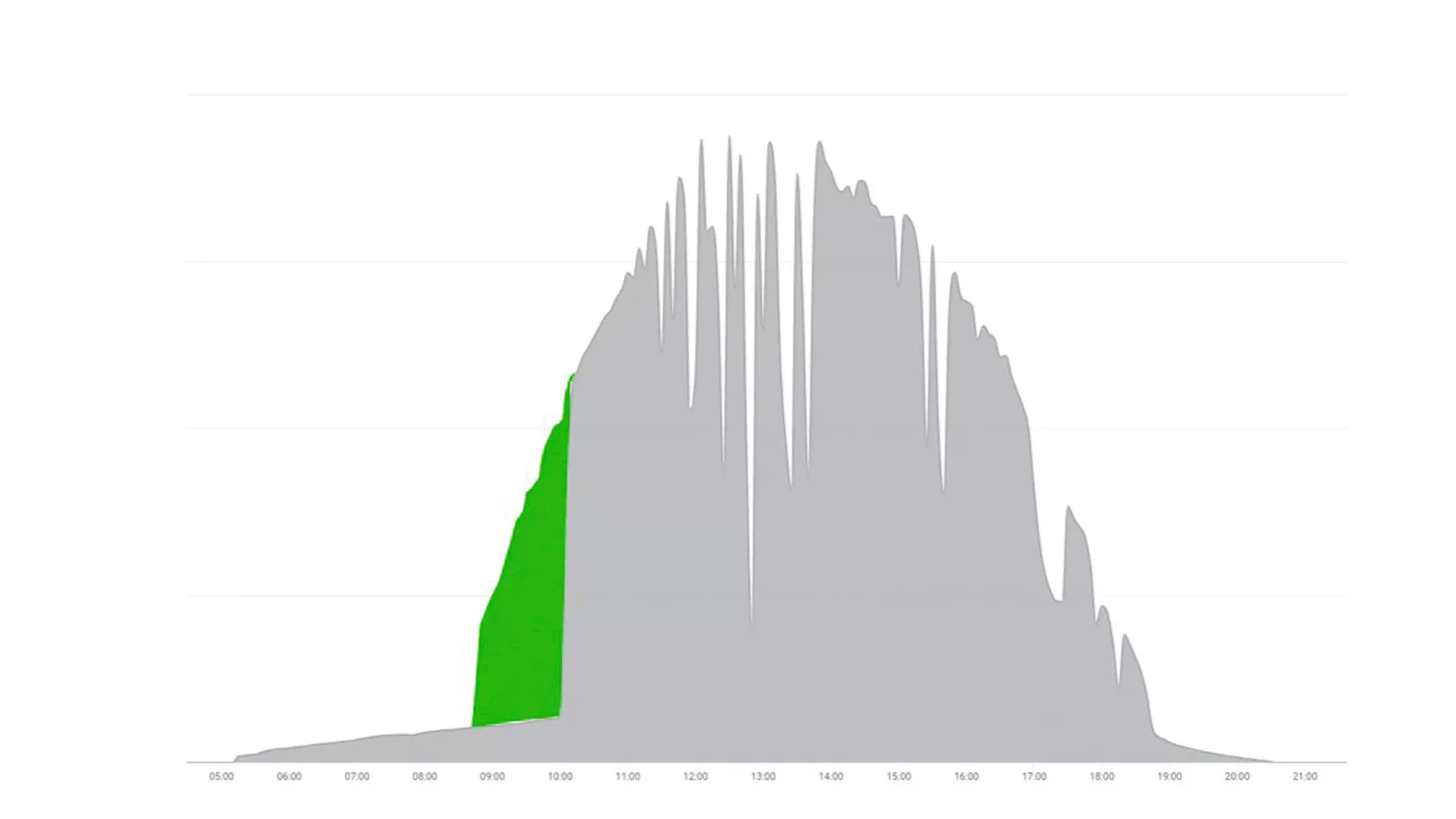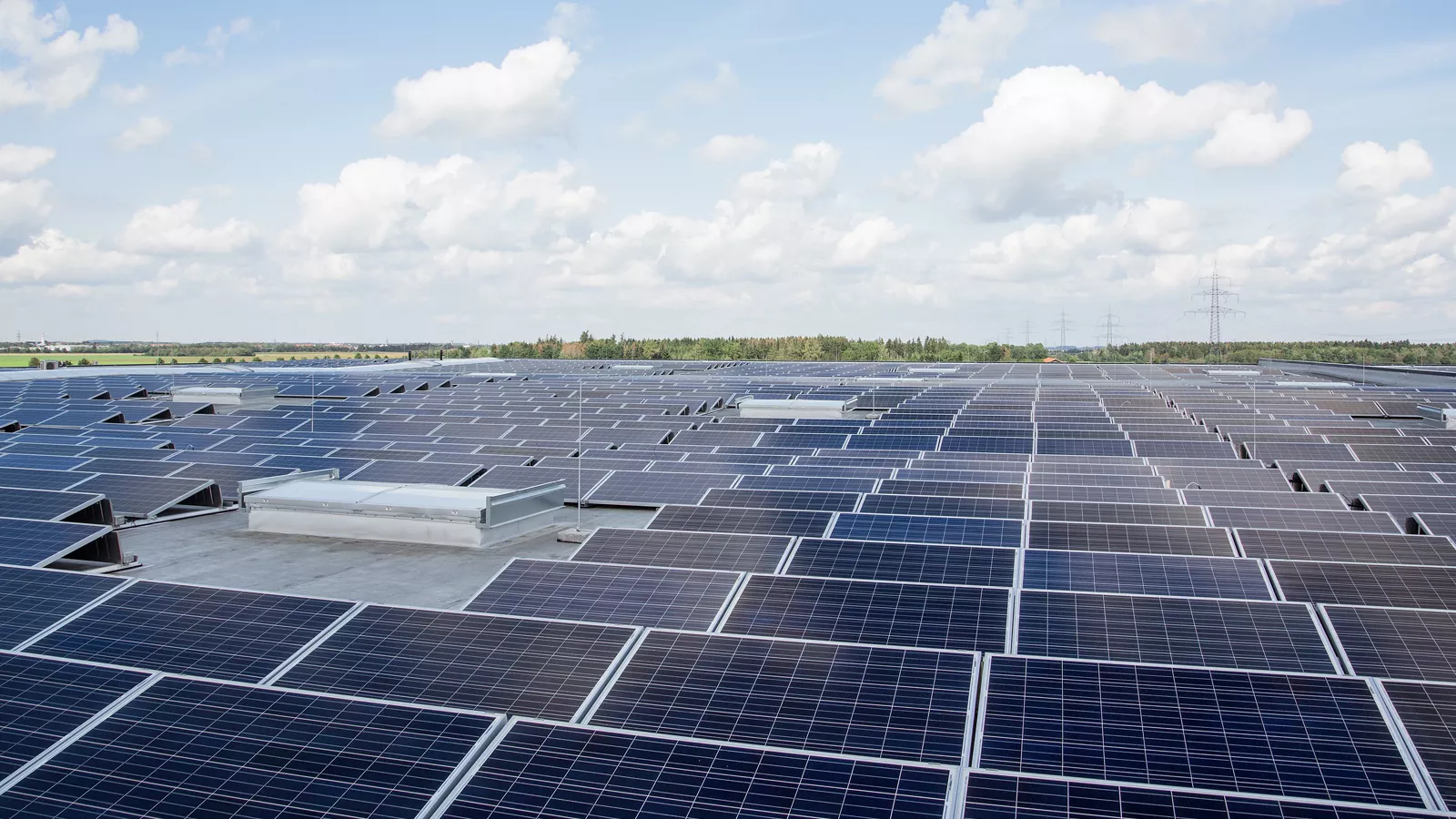Why String Inverter Systems are Nothing like Christmas Tree Lights
Modules have bypass diodes – Christmas tree lights
do not
If a module is being affected by shade, the by-pass diode of the module would activate (go into reverse bias), because the shaded cells would cause resistance. This would result in greater voltage on the diode to force it to allow current through, thus bypassing the affected sub-module. All the voltage of the first sub-module is lost, BUT current is maintained. Only 33% of the module voltage is lost – there are 3 sub-modules in a PV panel – while all the other modules in the system would not be affected at all.
Bypass diodes in today’s solar modules are very reliable. In fact, their failure rate is only a small fraction of a MLPE device’s failure rate. Even if they bypass diode is utilized more because there is shade on the module for some time of the day, it is still the far more reliable shade mitigation solution.

Shade does not impact a system like a broken Christmas tree light
If there is a shading scenario on the module that does not activate the bypass diode as described above, there can be a reduction in current by 5 - 15%. This affects all cells of all modules in the same string.
Let’s look at an example:If we assume there are 8 modules in a string, then 7 modules would have full voltage and the shaded module would have about 66% of full voltage. Overall, the string voltage is 7.66 / 8.00 or 95.7% of normal. The current is hampered 5 - 15%, depending on what percentage of that cell s shaded If we say 10% is shaded, then current is at 90% of normal – 90% of 95.7% = 86%. Therefore, if one shaded module is reduced by 10%, the overall system is not reduced down to that level. |

String inverters have software based shade mitigation
Intelligent shade management, which is part of the inverter software, reduces shade-related yield losses to a minimum, without the hassle of additional hardware on the roof. This highly efficient software algorithm detects any shade and optimizes the yield at the string level. Not only does this cost less because there are fewer system components, it also keeps installation and service (O&M) costs to a minimum, as well as reducing safety risks to technicians.
Detailed information about Dynamic Peak Manager here.
Not all solar panels are connected in one string
A solar system typically consists of more than one string. So even if there is shade on a part of the system, only this string is impacted. The other strings are not impacted at all. Modern string inverters with SuperFlex Design have multiple Maximum Power Point Trackers (MPPT), which allow to splitting up the system into multiple sub-systems, allowing you isolation of modules that could be affected by shade.
We’ve seen that string inverter systems are nothing like Christmas lights. Modern string inverter technology outperforms traditional module level power electronics such as DC optimizers and microinverters, and are the best choice for your solar system.

